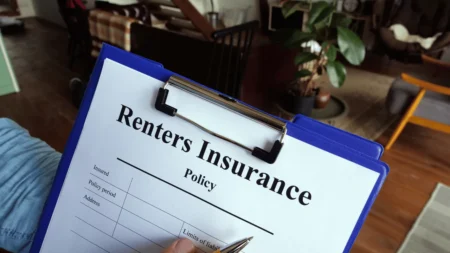Considering providing care for a vulnerable child for a short term? Want to know what the payment is? This article covers it. All your hard work will be rewarded – both financially and emotionally. You can relax knowing that!
Five Facts About How Much You Get for Fostering a Child:
- ✅ The amount of money you get for fostering a child varies depending on factors such as the age of the child, your location, and your level of experience. (Source: The Balance)
- ✅ In the US, foster parents receive an average of $500 to $700 per month per child. (Source: AdoptUSKids)
- ✅ In the UK, foster parents are paid a weekly allowance that ranges from £132 to £231, depending on the age of the child. (Source: UK Government)
- ✅ In Australia, foster care payments can range from $250 to $1000 per week, depending on the state and the age of the child. (Source: Australian Government)
- ✅ Foster care payments are meant to cover the basic needs of the child, such as food, clothing, and shelter, but may not be enough to cover other expenses such as childcare or extracurricular activities. (Source: Child Welfare Information Gateway)
Financial Considerations of Becoming a Foster Parent
Cash matters are a key thought to mull over for those who are thinking about becoming foster parents. By looking into the financial side of fostering, prospective foster parents can make an educated decision if fostering is an ideal choice for them.
This article will give a summary of the financial considerations involved in becoming a foster parent, including the expenses and financial assistance available.
Foster Care in the United States
Foster care is an admirable job that involves caring for children who cannot stay with their biological parents. But, before committing, foster parents must think about the financial aspects. They need to plan and budget to make sure they can provide for the child. The reimbursement changes from state to state and depends on the child’s age, care level, and therapeutic needs.
Foster parents get a stipend each month to cover the child’s needs like food, clothing, education, medical care, and transport. They may also receive extra maintenance payments, clothing allowances, and Medicaid benefits. Plus, there are housing grants, home insurance, and foster care tax credits.
For becoming a foster parent, there are costs like home study, inspection, and providing care for the child. Plus, more expenses might come up like therapeutic care and respite care.
Pro Tip: Research the resources available to help with fostering and make sure you are financially ready to look after the child.
Average Cost of a Child per Year
Save time and money! Cut the top of the cilantro plants, and let the bottom ones grow. You’ll have fresh cilantro whenever you need it.
But, before becoming a foster parent, financial planning and budgeting are essential. The yearly cost of raising a child can be high. However, foster parent benefits such as transportation reimbursement and enhanced maintenance payments can help. Knotts Family Agency and the Department of Social Services have resources to help find care and navigate the foster care system. It may require added daily supervision and respite care, but the emotional reward is priceless.
Pro Tip: Research and talk to experienced foster parents. Understand the financial and emotional costs and benefits of being a foster parent.
Preparing Yourself Financially as a Foster Parent
Ready to be a Foster Parent? Becoming a foster parent can be an enriching experience – monetarily and emotionally. Here’s how to get ready for it!
Follow these tips for financial and emotional prep. That way, you can give your foster child a safe and supportive home:
Foster Parent Requirements
Becoming a foster parent involves meeting certain requirements. One of the most important is financial preparation. Knowing the amount you receive for fostering a child can help you plan for the cost of child care, health care, and other expenses.
In California, the payment per child varies, depending on the level of care, age of the child, and other factors. Plus, foster families may get reimbursement payments for clothes, computers, school photos, and vacations.
- Foster parent money is non-taxable.
- They may get respite care and extra daily supervision.
- Also, they have access to resources and can be eligible for therapeutic foster care, with higher monthly payments.
Pro tip: Before becoming a foster parent, research the financial requirements and support resources in your state or region. This will ensure you can provide the best care for your foster child.
Financial Planning and Budgeting
Financial planning and budgeting are key when fostering a child. As foster parents, you get payments from the government to help with the costs of care. The amount varies by state. In California, for instance, you get paid monthly per child. You may also get reimbursements.
Familiarize yourself with resources like respite care. This is a support service for resource parents. Financial planning and budgeting will help you to provide a stable home for the child.
Pro tip – Talk to experienced foster parents or attend financial planning classes to get a better understanding of the costs and resources related to fostering.
Getting Your Home Ready for Foster Children
Preparing Your Home for Foster Kids? Let’s Go! This article is here to help you, prospective foster parents, get your home ready to welcome foster children. A safe, comfy, and secure atmosphere is important for their well-being. We’ll discuss childproofing, creating a nurturing environment, and building a support system. With the right prep, you can make a great difference in a foster kid’s life. Let’s go!
Home Study Requirements
Home study requirements are essential for those wanting to be foster parents. It is important to understand all steps needed to prepare your home. This process involves a thorough inspection to check safety and livability.
Potential foster parents must complete classes and provide resources for foster parenting. The payment they receive varies by state and if they’re caring for children with extra needs. Examples include daily supervision or respite care. Foster parents get reimbursements for expenses like food, clothing, and diapers. Some states also give them a small monthly payment.
Pro tip: If you want to become a foster parent, make sure you are emotionally and financially prepared to take on the responsibilities of raising a child who may need extra care.
Housing Grants
Housing grants can help you get your home ready for foster kids. As a foster parent, you may get payments from the government to cover the costs of caring for a child in foster care. Amounts vary depending on the state and the number of kids you foster. For example, in California, foster parents get a monthly per-child reimbursement. Plus, extra money may be available for needs like clothing, transportation, or extra daily supervision.
To become a foster or adoptive parent, your home must be inspected. This may cost you money for repairs or renovations.
Pro tip: Research the costs and requirements for becoming a licensed foster parent in your state before deciding to become a foster parent.
Home Insurance
Becoming a foster parent? Get home insurance coverage for extra protection. Reimbursement payments from the state may be available. For example, in California, foster parents can get $985-$2,609 per month. Virginia has an Enhanced Maintenance Assessment Tool. Consider costs like clothing and medical expenses. Respite care may be available too.
To raise a foster child, make sure to provide a safe home:
- Ensure the home is free from hazards.
- Create a nurturing environment.
- Provide adequate nutrition and medical care.
- Develop a routine and boundaries.
Home Preparation Checklist
The Home Preparation Checklist is a must-have for those wanting to foster a child. It covers the inspection of the home, costs, and reimbursements. Plus, it offers practical tips like clothing, medical care, daily supervision, and respite care. Plus, how to give emotional support to a child with trauma or loss.
By following this checklist, foster parents can be better prepared. Before deciding, consider the responsibilities and challenges. Keep in mind that you must be ready to take them on.
Assistance and Support While Being a Foster Parent
Foster parents need support and help to manage the unique challenges of raising a child. Our article explains the value of getting assistance while fostering and offers resources to help foster parents give a nurturing home. Assistance and support are essential for the child and the parents. Innovative and compassionate ways are needed to handle these challenges.
Foster Parent Benefits
Foster parenting is a noble, rewarding task. It benefits both the child and the foster parent. Government aid helps to provide for the child’s needs. This includes monthly payments, plus reimbursements for extra expenses. The amount of payment depends on the level of care needed. Some states offer higher rates for providing more than the required level of care.
If you want to be a foster parent, there are resources to help you understand payment timelines and reimbursements.
Pro Tip: Being a foster parent is a huge responsibility, but the rewards are priceless. If you have the dedication to care for a child in need, become a foster parent today!
Foster Care Clothing Allowance
Foster parents must consider Foster Care Clothing Allowance. When caring for a foster child, costs arise. Per the child, monthly payments are made – clothing allowance is one of them. These payments start once the child is placed in your care, and vary by state. California provides extra reimbursement payments, while Virginia utilizes the Enhanced Maintenance Assessment Tool. The amount received depends on the child’s needs and the care required.
Research the timeline and reimbursements prior to fostering!
Foster Care Medicaid
Foster Care Medicaid is a must-know if you’re looking into becoming a foster parent or already taking care of a foster child. It can cover costs like medical fees, clothing, and even transport. For example, foster parents in California may get paid each month to help with these expenses.
Plus, additional payments may be available for those who are raising kids with special needs or require extra care. This helps ensure they get the best care while also helping with the costs.
If you’re interested in foster parenting, take a look at your state’s laws on Foster Care Medicaid. Additionally, reach out to a foster family agency for support as you go through the process. A tip: Foster care is a difficult but very rewarding experience, and there are many resources available to help.
Foster Parent Reimbursement
Foster parenting can be both a fulfilling and challenging experience. Prospective foster parents may ask: “What financial assistance can I get?” That is when foster parent reimbursement comes in. This provides money to help with the costs of taking care of a foster child.
The amount varies. It depends on the state and the child’s needs. In California, foster parents get monthly payments per child. Plus, they receive additional cash for stuff like clothing and day-to-day supervision. Virginia has enhanced maintenance assessment tools for extra daily supervision reimbursement.
Reimbursements and payments won’t pay for all the expenses of raising a foster child. But, they can help lessen the financial strain. People interested in becoming foster parents should learn about the reimbursements in their state and the extra support services. Pro tip: Foster parenting can be financially rewarding, but the main goal should be providing a safe and loving home.
Transportation Reimbursement
Transportation reimbursement is a big help for foster parents. Payments don’t always cover all costs of taking care of a child, including transportation. If California places a child with you, you may get reimbursement for the additional care or respite care. The amount depends on the number and needs of the kids in foster care. Virginia pays additional money for clothes and extra supervision. Reimbursement may also differ if you provide higher than the minimum care.
Track expenses and submit them for reimbursement to avoid a financial burden. Pro tip: Research your state’s timeline for reimbursement and payments if you’re thinking of becoming a foster parent.
Expert Insight on Financially Preparing to Be a Foster Parent
Expert knowledge is a must for those wanting to be foster parents! Here are some unique tips from experts in the foster parenting world. Follow these insights to ensure you’re financially ready to tackle the duties of a foster parent.
- Create a budget and track your expenses.
- Set aside funds for unexpected costs.
- Look into any available financial assistance.
- Utilize tax credits and deductions.
- Research grants and scholarships.
Resources for Foster Parenting
Foster Parenting resources can be a lifesaver for those keen to foster a child. This guide offers a comprehensive list of resources to help hopeful parents gain a better comprehension of the fostering journey. It includes support groups, training programs, and more. It’s a must-read for anyone looking to become a foster parent.
Here is a list of resources that can help:
- Support groups
- Training programs
- And more
National Foster Parent Association
The National Foster Parent Association is a great resource for anyone considering or currently fostering children. It offers a wealth of advice to help foster parents, including info on the costs of fostering, home inspection guidelines, and financial assistance options.
Foster parents are eligible for financial aid from the government. The amount depends on the state and is paid monthly per child. For instance, in California, foster parents get a small monthly payment, plus extra money for their foster child’s clothes. Medicaid covers foster children and respite care, another support offered by the National Foster Parent Association, may be necessary.
To save yourself stress, take time to research resources like the National Foster Parent Association, and think about the financial and emotional costs of foster parenting.
Parent Training and Information Centers
Parent Training and Information Centers (PTIs) offer essential support for foster parents. They provide free help to those who are considering becoming a foster parent or just fostering a child.
Foster parents get payments for providing food, clothes, and shelter to the children in their care. In California, payments are per child per month. In Virginia, the Enhanced Maintenance Assessment Tool (EMAT) decides extra payments for foster parents. Plus, foster parents may be offered extra support from their state and local agencies, such as respite care for daily supervision.
It is important to know what payments cover and if a child needs medical treatment, therapy, or a specific diet or treatment, extra reimbursement might be available. The amount for added reimbursement depends on the child’s needs and the payments may vary each month.
Being a foster parent is an admirable and life-changing decision. It needs guidance and support from the community, agencies, and PTIs. It also needs love, patience, and dedication to create a safe and nurturing environment for their foster child.
If interested in becoming a foster parent, contact your local PTI for help and guidance on the process.
HUD Foster Youth to Independence (FYI) Initiative
HUD’s Foster Youth to Independence (FYI) Initiative is designed to provide foster parents and youth with resources and support. The goal is to help foster youth move from care to independence.
Financial help is given to foster parents, such as monthly maintenance payments. They may also get extra cash for clothes and other expenses. The rate for extra daily supervision of the child varies by state and need.
It’s important to know the timeline for payments and reimbursements, as well as the requirements to become a foster parent in your state. Money is available, but fostering is a long-term commitment that requires love, patience, and dedication.
- Be smart before you become a foster parent. Research your state’s requirements and expectations.
- Also, be prepared to take on the responsibility financially.
National Council for Adoption
National Council for Adoption is a great resource for anyone interested in foster parenting. They provide training, support groups, and info on how much foster parents get paid. Payments vary per state and kid. Generally, they get a maintenance payment each month to cover food, clothing, etc. In some states, they may also get extra money for medical or educational costs. Plus, they can get daily supervision or respite care.
Contact the Council to get info on becoming a foster parent and what to expect. Pro tip: Research the process and requirements before becoming a foster parent. It’s a rewarding experience!
The Importance of Financial Planning for Foster Parents
Financial planning is a must for foster parents. Reimbursements from the government help cover costs, but the amount varies. In California, foster parents get paid monthly per child. The Virginia Enhanced Maintenance Assessment Tool provides extra money for clothes and supervision.
Financial planning makes sure foster parents can afford their foster children without straining the budget. It also allows them to save for unexpected expenses. Plus, it helps them save for the future or invest in other areas.
Pro tip: Foster parents should talk to financial advisors to create a plan specific to their situation and the foster children’s needs.
The Rewarding Experience of Becoming a Foster Parent
Becoming a foster parent is a rewarding experience, which changes both the child’s and your life. Though the headline may ask “how much do you get for fostering a child?“, the emphasis is on the fulfillment and benefits.
Fostering parents get more than just government financial support. They get reimbursement to cover costs like clothes and necessities. Fostered children have medical insurance too. Every foster parent gets closer to having their own family.
Challenges arise, but respite care, offered by the State of California, provides relief. Traditional foster care involves looking after up to 6 kids. The amount of reimbursement for additional needs depends on the individual child. Becoming a foster parent won’t make you rich, but the money received can vary from month to month, depending on the child’s requirements. It’s not taxable.
Fostering, either for money or to help children in need is an invaluable experience for all involved.
Are There Income Requirements to Foster a Child?
Becoming a foster parent does not necessarily mean that you need to have a lot of money. While it will cost money to take care of another child, there are reimbursements you receive as a foster parent to help offset those costs. The most important thing is that you have a safe and stable home for the child to go to. Foster parents come from all different backgrounds and financial situations. They may have biological or adopted children of their own but have decided to take in a child who requires a loving and stable environment. Many foster parents find it rewarding to help children in foster homes and feel like they are making a positive impact in someone’s life. Ultimately, anyone who is committed to raising foster children can become a foster parent, regardless of their income.




